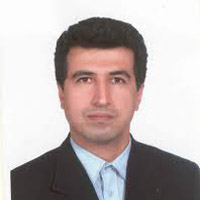Spatial relationships of geodiversity and vegetation cover (Case study: Oshtorankuh protected area in Lorestan province)
The world is diverse in all dimensions and the natural diversity of the planet can be divided into two categories: geodiversity and biodiversity. In fact, geodiversity is referred to as the diversity of non-living factors on Earth, which has certain services and functions. Areas with high geodiversity and geomorphodiversity are the main parts of the geological heritage; Hence, they must be preserved for future generations. Geodiversity provides the elements and conditions necessary for plant growth and development, so it has become an important issue in global conservation issues. In order to successfully protect the biodiversity and especially the characteristics and diversity of vegetation in an area, it is necessary to assess the geodiversity and pay attention to geoconservation. Therefore, this study intends to investigate the relationship between geodiversity and vegetation characteristics of a protected area to achieve comprehensive and complete natural protection.
Oshtorankuh Protected Area is located in the west of Iran and in the east of Lorestan province; In order to analyze the relationship between geodiversity and vegetation characteristics, various indicators were used in this research. First, the geodiversity of the study area was evaluated, which was divided into three classes: low, medium and high. Then, based on the geomorphological map prepared from the protected area of Oshtorankuh, the results were verified and then the types of vegetation in this area were divided into five classes using spectral unmixing method and based on morphological classification, and finally It was compared and analyzed with the results of geodiversity assessment. In order to determine the spatial distribution pattern of vegetation types and follow the spatial distribution pattern of geodiversity classes, the soil adjusted vegetation index was used.
The results of the geodiversity assessment showed that the northern parts of the Protected area, and in particular the northern slopes of the Oshtorankuh mountain range on the third floor of the geodiversity (high diversity); The northern and southern parts of sabz mount, Negar valley and Chalmiron mount due to the passage of Doroud strike-slip fault and various fault landforms, Alluvial–Fluvial sediments leading to the eastern valley of Gohar Lake, numerous landslides and diversity in evaporitic formations, in The second class was geodiversity and geomorphodiversity. The western parts of the Oshtorankuh Protected Area and the major parts of priz mount are also located on the first floor of Geodiversity and Geomorphodiversity. After evaluating the geodiversity of Oshtorankuh Protected Area, the types of vegetation formations in this area were identified and the space and coverage percentage of each type of vegetation in accordance with the geodiversity classes were calculated and analyzed. After that, the spatial distribution pattern of geodiversity classes was studied with the spatial distribution pattern of different vegetation formations and similarities were observed. After that, the spatial distribution pattern of geodiversity classes was studied with the spatial distribution pattern of different vegetation formations and similarities were observed.
Studies have shown that the density, pattern and area of spatial distribution and the type of vegetation formations in the protected area of Oshtorankuh follow the geodiversity classes. Thus, the meadow with tree formation had the highest adaptation to the third class of geodiversity (high diversity) compared to other groups. Shrub formation also had the highest adaptation to the second class of geodiversity (medium diversity) compared to other types of coatings. From shrub formation to pasture and meadow, the process of adapting the covered area to the first floor is increasing and to the second floor is decreasing geodiversity. According to the above, rich geodiversity is an important factor in determining the pattern, density and type of vegetation formations in an area, and therefore to succeed in the conservation of biodiversity, especially vegetation in protected areas, proper attention to geoconservation is essential.
- حق عضویت دریافتی صرف حمایت از نشریات عضو و نگهداری، تکمیل و توسعه مگیران میشود.
- پرداخت حق اشتراک و دانلود مقالات اجازه بازنشر آن در سایر رسانههای چاپی و دیجیتال را به کاربر نمیدهد.



